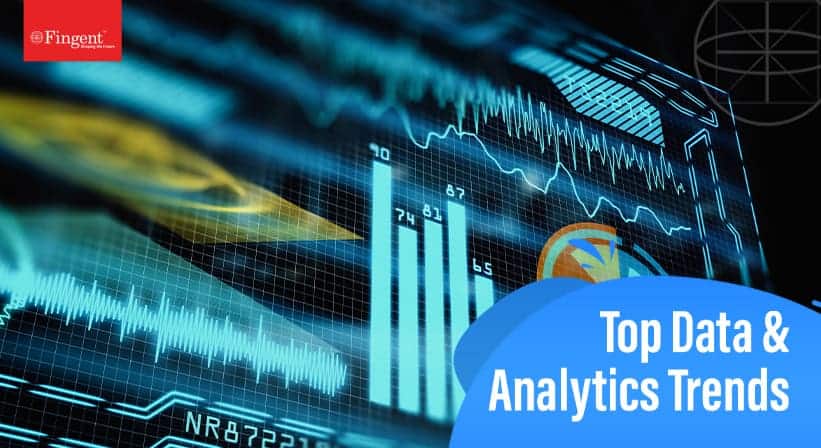How has Business Intelligence Changed in the Last One Year?
According to a recent report by InformationWeek on business intelligence, up to 28% of business professionals responsible for software selection in their firms, said that they have set the standards for one or a few analytics products in their organization. It was 35% last year, so this time apparently we have a 7% decrease.
Now, why has there been such a decrease?
The answer is not very different from what it was for the last three years. Almost 48% of BI decision makers say that “ease-of-use challenges with complex software or less technically savvy employees” is one of the main barriers to its increased adoption. Another major factor being data quality issues.
Although, the survey also found another 21% of decision makers did adopt several analytics and BI products for their firms, which is an increase from 16% from last year.
According to two different schools of thought, there have emerged two different approaches to developing and using analytics software. One school believes that if software, is simple to use, then people can handle even complex analysis. On the other hand, another school believes that if the software is made to be smart, then it can handle the analysis part on its own. So, it all comes down to choosing between simpler or smarter.
Products such as Qlik Sense, Tableau Elastic fall in the “simple to use” category and other popular ones from IBM and SAS fall in the smarter category. Tableau has gone as far as making their software mobile compatible too, adding further to the ease of use. A recent development by IBM is Watson analytics, a cloud-based service that is sure to help in high-end data analysis.
Even though, the choice has to be made between simpler or smarter software, the ultimate fact is that most people prefer software that is both smart as well as easy to use. Our own product ReachOut Engage intends to bridge this gap with an easy to use interface and allows users to analyze the data on a primary level and export data to third-party systems for further analysis. According to the survey, IBM and SAS also argue that their software uses smart features that also make it easy to use. Even then, this idea of smarter versus simpler when put in front of Steve Rimar, senior staff, IT architect at Qualcomm, brought 2 distinct vendors to the limelight. This renowned BI and analytics practitioner said that they have used many tools over the years and QlikView and Oracle OBIEE have proved to be their dominant standards.
When we look into the databases used, the report shows that 26% of decision makers involved in the survey, said that their firms used NoSQL databases, which is an increase from 19% in the last year. Another 22% said that their firms used Hadoop, which again, is an increase from 15% in the last year. Now, Hadoop is one database which is steadily and definitely gaining adoption as a platform for storing high-scale data that is not capable of being stored in other relational databases. Some of the major reasons for this increase in adoption rate include:
- Ability to store and process semi-structured, unstructured and variable data as pointed out by 31% of respondents
- Ability to handle massive volumes of data as pointed out by another 30% of respondents
- Low hardware and storage scaling costs as compared to conventional relational database management systems as pointed out by another 25%
All these facilitate big data analysis. All these also indicate the growing interest in big data analysis. Now, what exactly are the factors that drive this growing interest?
Some of the reasons are:
- The need for finding correlations across multiple data sources like internet clickstreams, geospatial data and customer transaction data as cited by 48% of respondents
- The need for predicting customer behavior as cited by 46%
- The need for predicting product or service sales as cited by 40%
Other major reasons include the need for predicting fraud and financial risks, analyzing social networks and identifying security risks.
On the whole, big data analysis is no longer just data warehousing as we know it at high scale as the report suggests. So, the bottom line is to not just depend on SQL tools alone to learn new things and use new data sources. As other tools are gaining popularity, data analytics and business intelligence and information management are becoming simpler and smarter.
Stay up to date on what's new

Recommended Posts

25 Jun 2024 Financial Services B2B
Business Intelligence in Financial Services: Unlocking Data-Driven Success
Business Intelligence in Financial Services is proving to be a game changer. Business intelligence is a novel technology backed by AI. It is a combination of strategies and processes. Simply……

25 Jul 2023 B2B
A Quick Guide To A Successful Digital Transformation Journey!
Today, technology seamlessly weaves its way into every aspect of our daily lives. That's precisely what digital transformation is all about - a process that enables businesses to harness the……

28 Apr 2023 B2B
Utilizing SAP Analytics Tools to Turn Your Data Into Valuable Insights!
SAP is widely known for its brilliant abilities and functionalities, the foremost being Data Analysis. The newest version of SAP ERP is the SAP Data and Analytics Solution. It has……

18 Feb 2022 B2B
Top 10 Data and Analytics Trends Ruling the Roost in 2024
Over 95% of businesses struggle to manage unstructured data in their day-to-day operations. Inability to decipher data prevents them from navigating the market successfully, making business forecasts, and customizing their……
Featured Blogs
Stay up to date on
what's new




















































